Pregnancy is a powerful experience. Your body is thrust into a complete spin as it prepares to create life within you. Some weeks may be easier than others as you adapt to this ever-changing body of yours.
One of the trickier things may be how you adapt your routine; you may already be regularly active, and now finding your energy levels are dipping, or perhaps you’re now trying to increase your daily activity to help provide a strong healthy haven for your growing child.
Yoga is one of the best forms of movement to practice throughout your pregnancy. It’s relaxing to assist you through any difficult months of morning sickness or aches and pains, it also helps you to prepare for labor, as well as supporting a faster recovery once your baby has arrived.
Can I do Normal Yoga in the First Trimester?
Yoga is a fantastic way of maintaining your strength and flexibility during your prenatal months, but it’s also a wonderful way to calm your fluctuating hormones, as well as helping you to maintain a calm and stress-free experience as you progress.
Whether you are brand new to yoga or simply looking to vary your current practice to accommodate a prenatal yoga sequence, we have some recommend poses to help you throughout each stage of possibly the most exciting 9 months of your life.
Best Yoga Poses for First Trimester (Weeks 1 – 12)
During your first trimester, you may find it tricky to even consider exercise, as you battle nausea and tiredness, so these movements are simple and gentle, to help you give your body the time and space it needs to adjust to these new changes taking place.
Supported Supine Butterfly Pose (Baddha Konasana)
Butterfly pose brings wonderful benefits in pregnancy; it’s great for opening the hips, as well as helping to relieve lower back pain. Also, by practicing ‘supine’ (laid down) it becomes a soothing restorative pose.
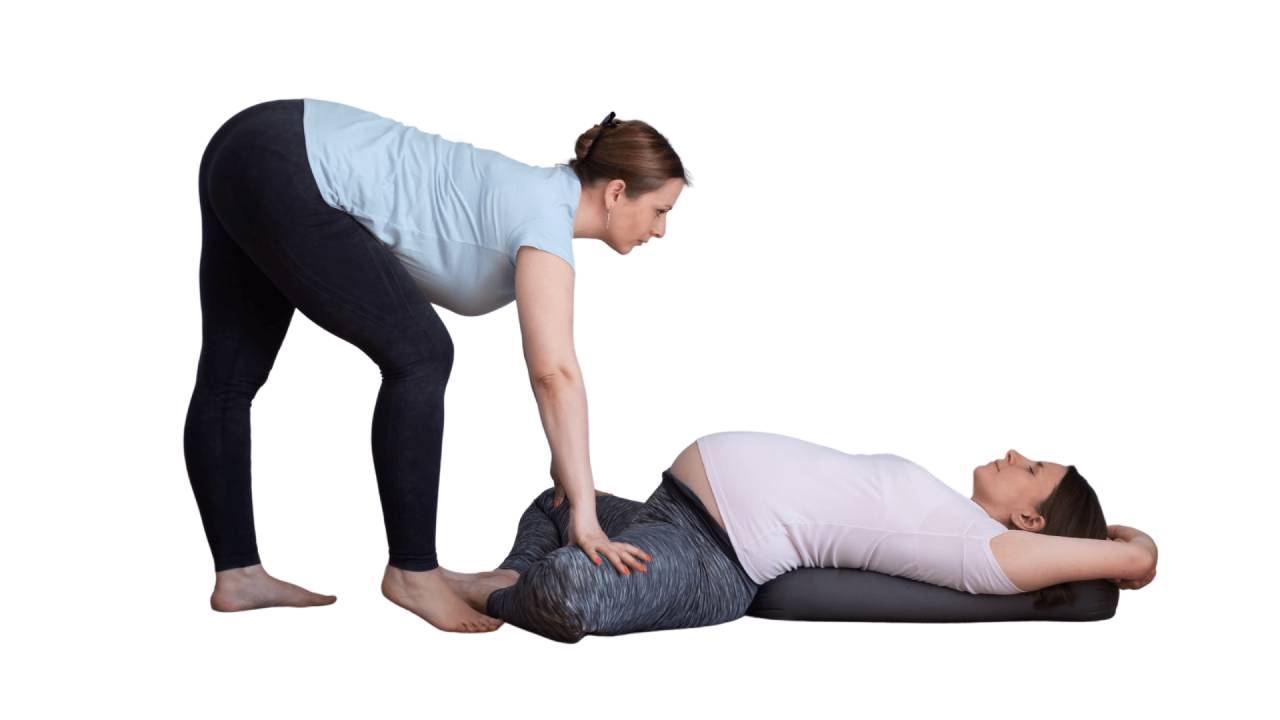
- Lay one or two pillows on the ground for comfort and lay back on an incline.
- Bringing your hands out to either side and the soles of your feet together – letting the knees fall wide.
- Close your eyes and relax here for 2-3 minutes.
Warrior II (Virabhadrasana II)
Warrior II is a soft hip opener that builds strength in the legs whilst being gentle on the core.
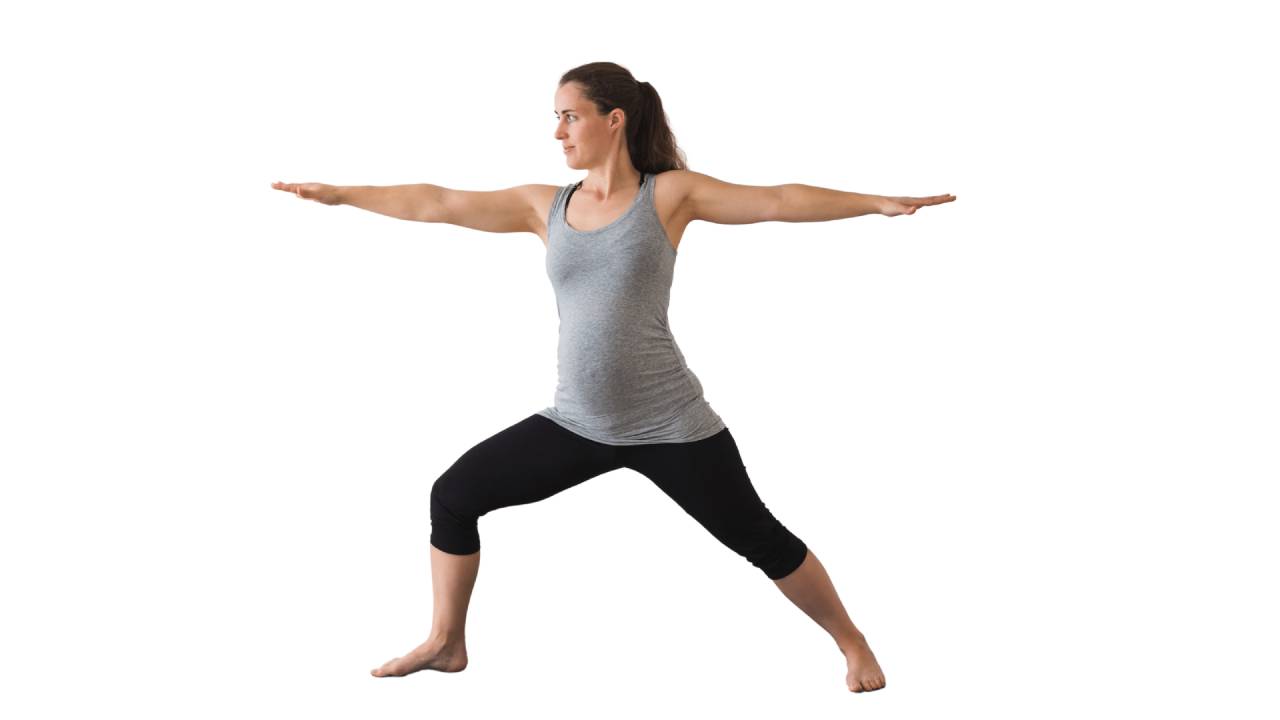
- Start by standing at the front of your mat and take a big step back with one foot.
- Bend your front leg so that your knee is stacked over the ankle and turn your back foot out to a 90-degree angle.
- Turn your torso to the side and open your arms out in opposite directions. Look over your extended front fingertips.
- Repeat on the other side.
Crescent Lunge (Anjaneyasana)
Crescent lunge is ideal for and overall stretch of your muscles, in turn helping to relieve any back pain.
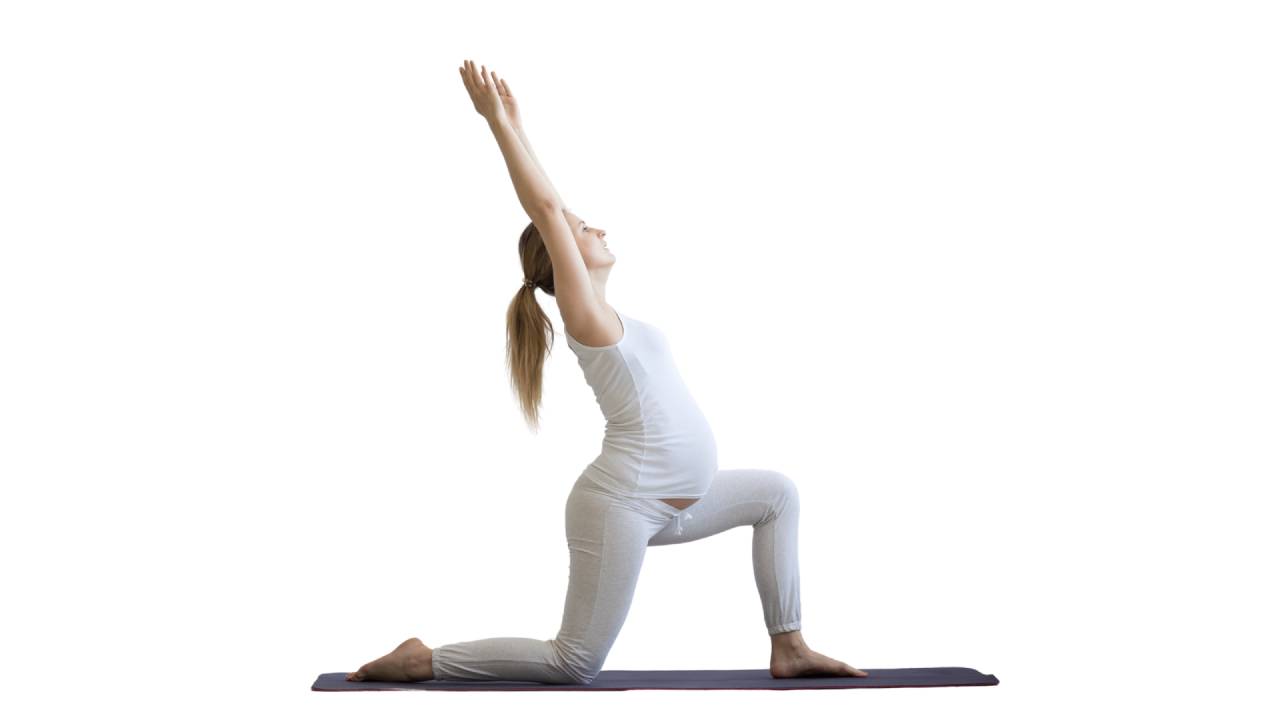
- Start by standing at the front of your mat. Take a big step back with one foot and lower your knee down to the ground.
- Stack your knee over the ankle and lift your arms, reaching toward the sky.
- Look up towards your fingertips.
- Repeat on the other side
Tree Pose (Vrikshasana)
Tree pose is a lovely, reflective pose that allows us to open our hips and improve our focus. Perfect for taking a little time out.
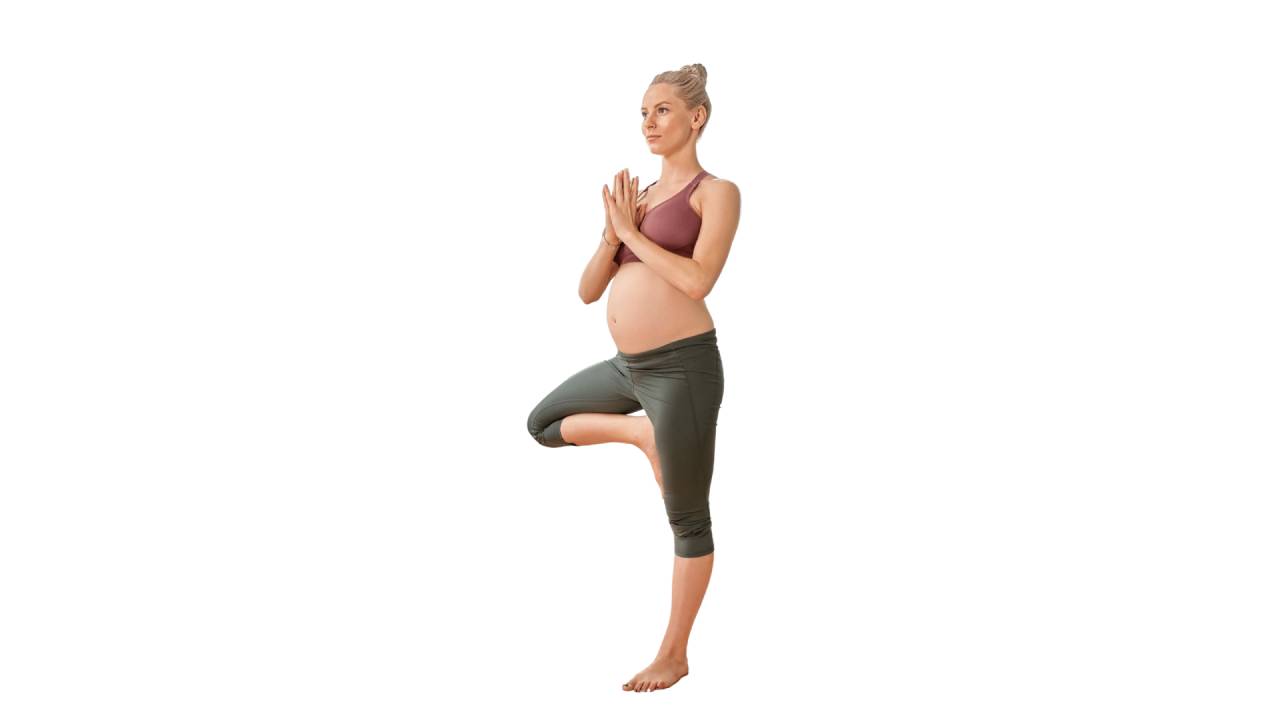
- Start by standing tall – bring your weight onto one leg.
- Bend your other knee and place the sole of your foot on the ankle, calf, or inner thigh (whichever feels most comfortable) of your standing leg.
- Choose a spot to focus your gaze (for balance) on and bring your hands to a prayer position.
- Actively push your bent knee away and behind to stretch your lower back.
Modified Plank (Phalakasana)
The modified plank pose is a gentle way strengthener for your core and back and is a pose that will help you throughout your pregnancy.
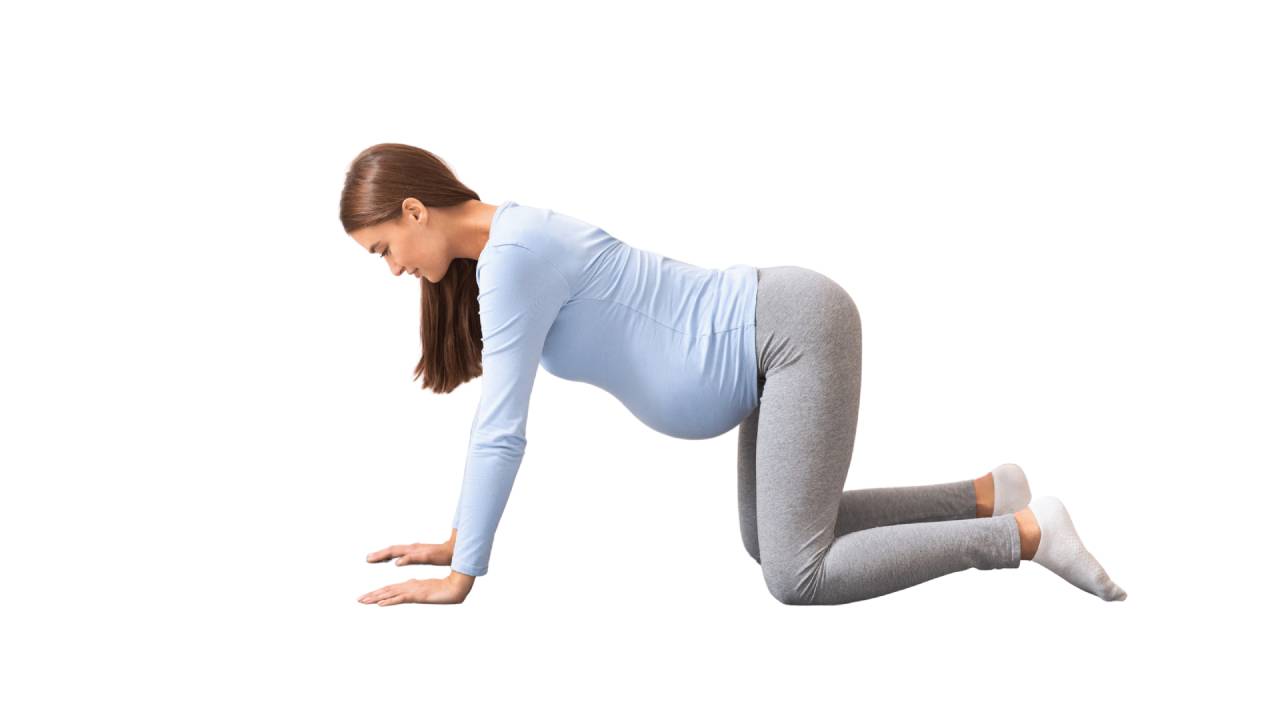
- Bring yourself on all fours with your hands stacked underneath your shoulders.
- Push your weight into your hands to maintain a strong position.
- Keep your hips in line with the rest of your body.
- Keep your feet on the floor or bend at the knees to lift your feet towards the ceiling, crossing your ankles.
Cat-Cow Pose (Bitilasana)
Cat-cow is a soft and gentle movement that helps strengthen your abdominals and lower back, as well as carefully stretching the spine.
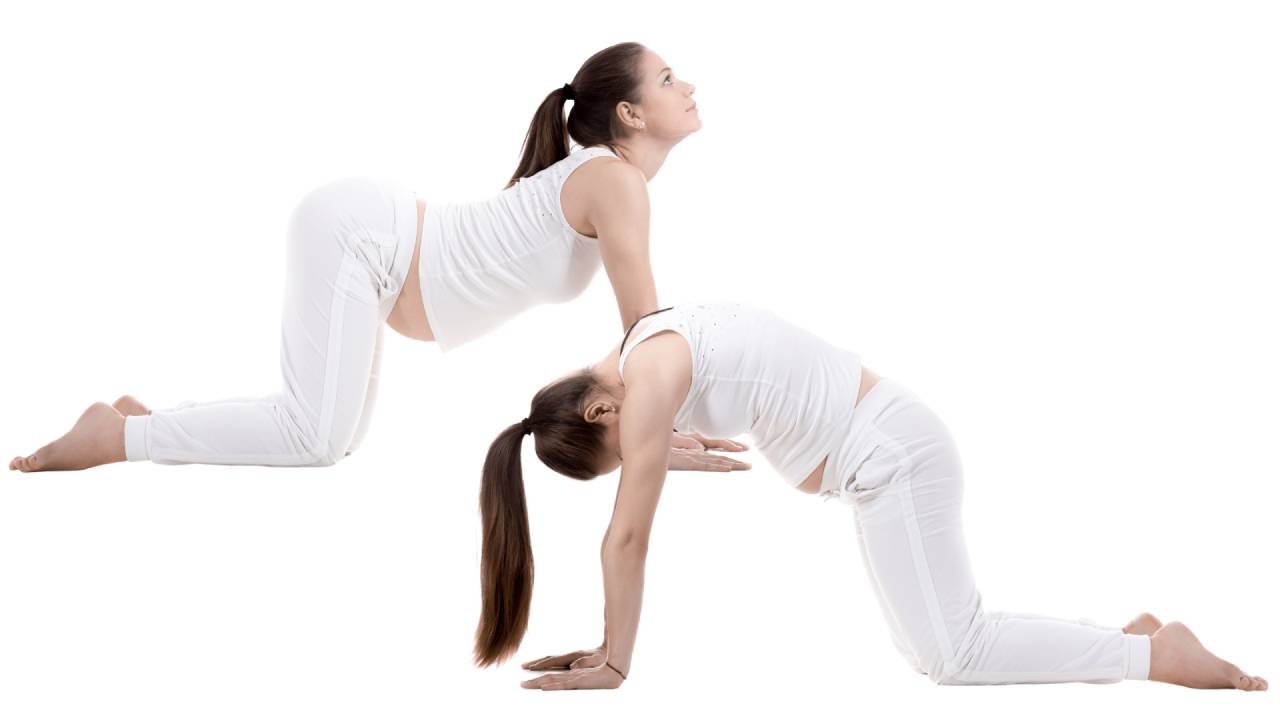
- Bring yourself on all fours with your hands stacked underneath your shoulders.
- Push your weight into your hands to maintain a strong position.
- Bring your shoulders away from your ears and press the tops of your feet into the mat
- As you inhale, drop your belly, pushing your chest forwards. At the same time, tuck your tailbone under, lift your head and look slightly up.
- As you exhale, now untuck your tailbone, rounding up through the spine and gently tuck your chin in towards your chest.
Listen to your body throughout. If at any point you feel uncomfortable, use tools such as a pillow to provide added comfort or simply stop the pose. Your body is intuitive, so listen to your instincts.
Prenatal Yoga - Your 2nd Trimester (Weeks 13 – 27)
You may be finding at this stage, that you are getting used to the feeling of being pregnant, perhaps your hormones are starting to feel a little more balanced and you’re feeling more in control of your body. You may feel you are able to attempt a few more poses, so go gently, and continue listening to your body – don’t push a pose if it’s uncomfortable.
Thunderbolt or Hero’s Pose (Vajrasana)
A lovely restful pose that will help strengthen your thigh muscles, support healthy digestion, and promote good blood flow.
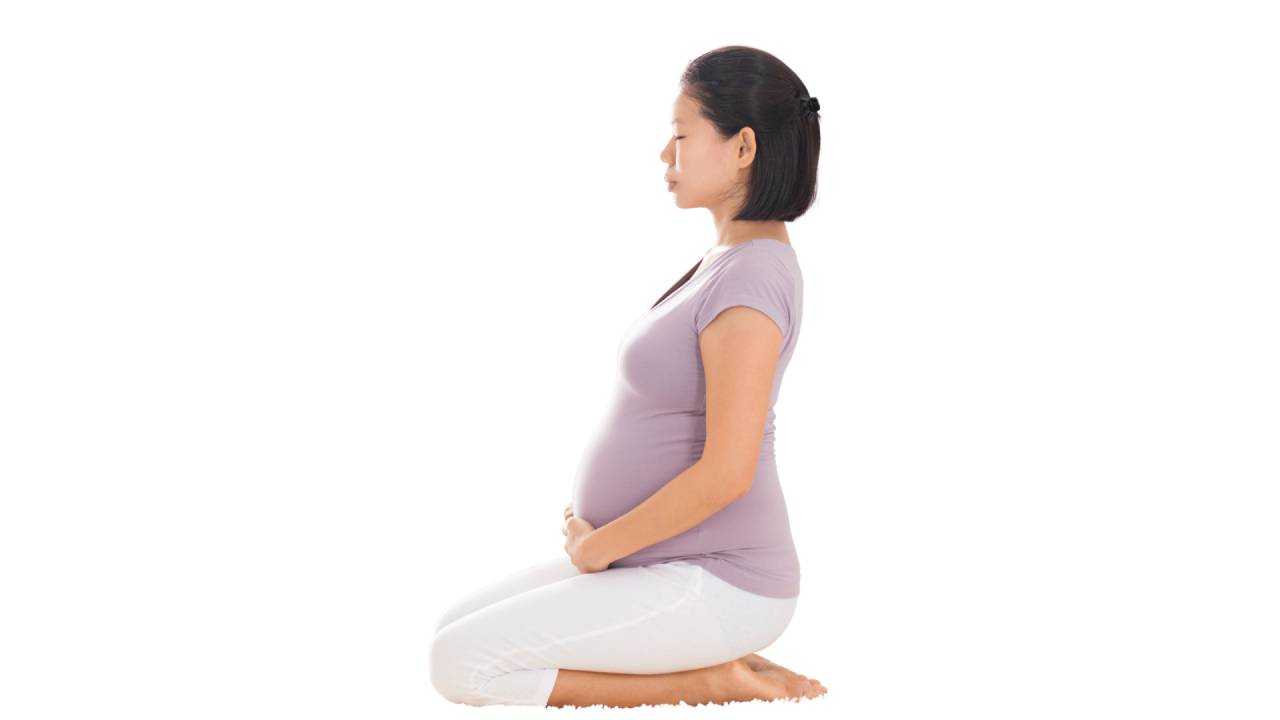
- Kneel on the floor. Bring your big toes together and separate your heels.
- Lower your glutes to your feet, with your heels touching either side of your hips.
- Place your hands on your knees, palms down. Keep your back and head should be straight throughout.
- Take deep, calming breathes, in and out.
Side Leg Raise (Vishnuasana)
A lovely stretching pose that helps strengthen your abdominal muscles, hamstrings, and inner thighs.
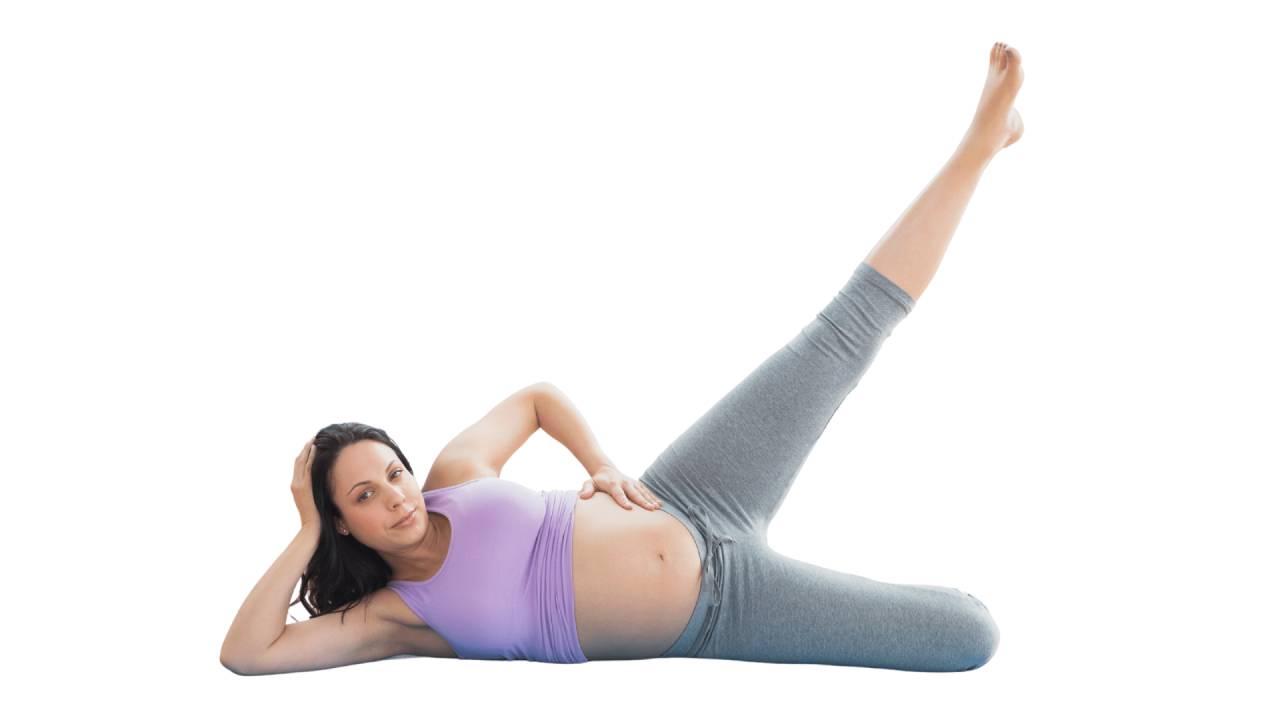
- Lie down on one side with one leg on top of the other.
- Use your hand to support your head.
- Place your top hand on the top leg, and slowly start to raise the leg upwards, keeping it as straight as possible.
- If you can, reach your hand towards your lifted foot as you hold it in the air. Otherwise, simply tense your quads and hamstrings and hold the leg in the air, as high as you feel comfortable.
- Roll on to your other side and repeat it with the other leg
Warrior 1 Pose (Virabhadrasana)
This first pose of the Warrior sequence is a great relief for stiffness in the neck, shoulders and back.
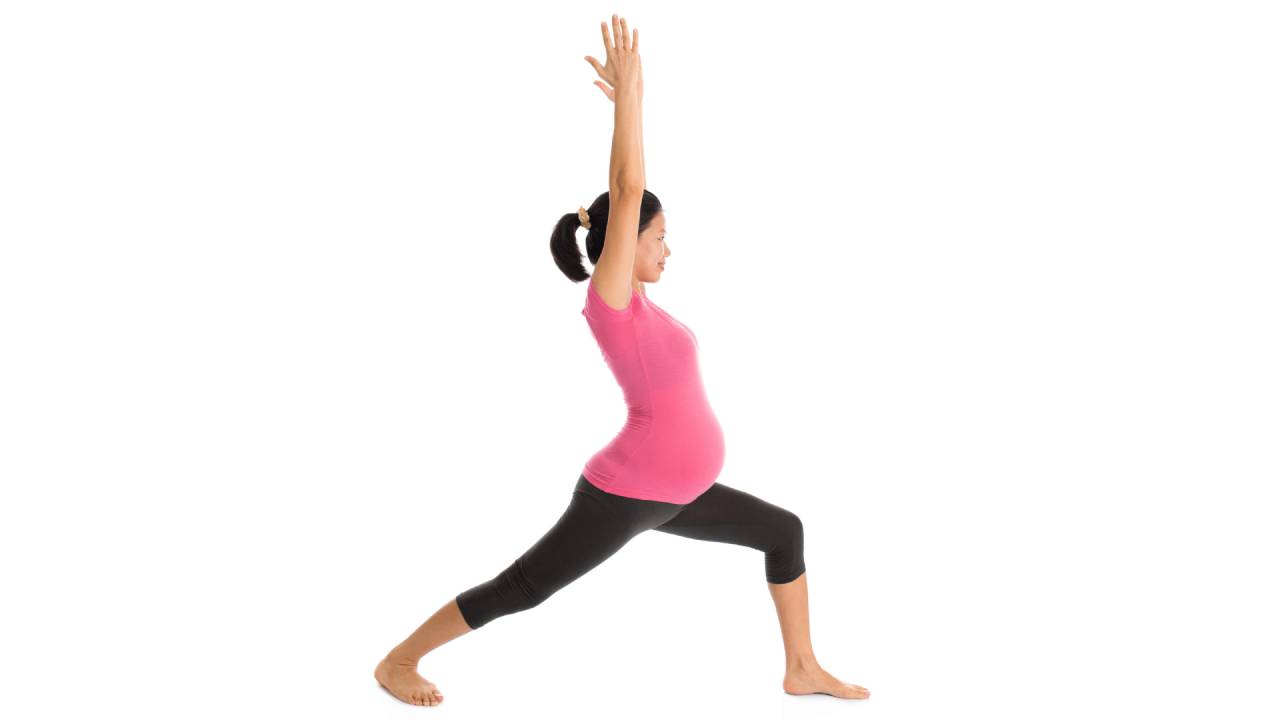
- Stand by placing your feet a little wider than hip-width apart.
- Turn one foot outwards, while slightly turning the left foot inwards.
- Raise your hands to shoulder level, parallel with the floor.
- Bend your back knee and extend your leg behind you, similar to a high lunge.
- Look straight ahead.
- Repeat with the other foot.
Reverse Warrior (Viparita Virabhadrasana)
Think of this as a side bend done in a lunge position. It’s great for strengthening the legs, opening your sides, and improving spinal mobility and balance.
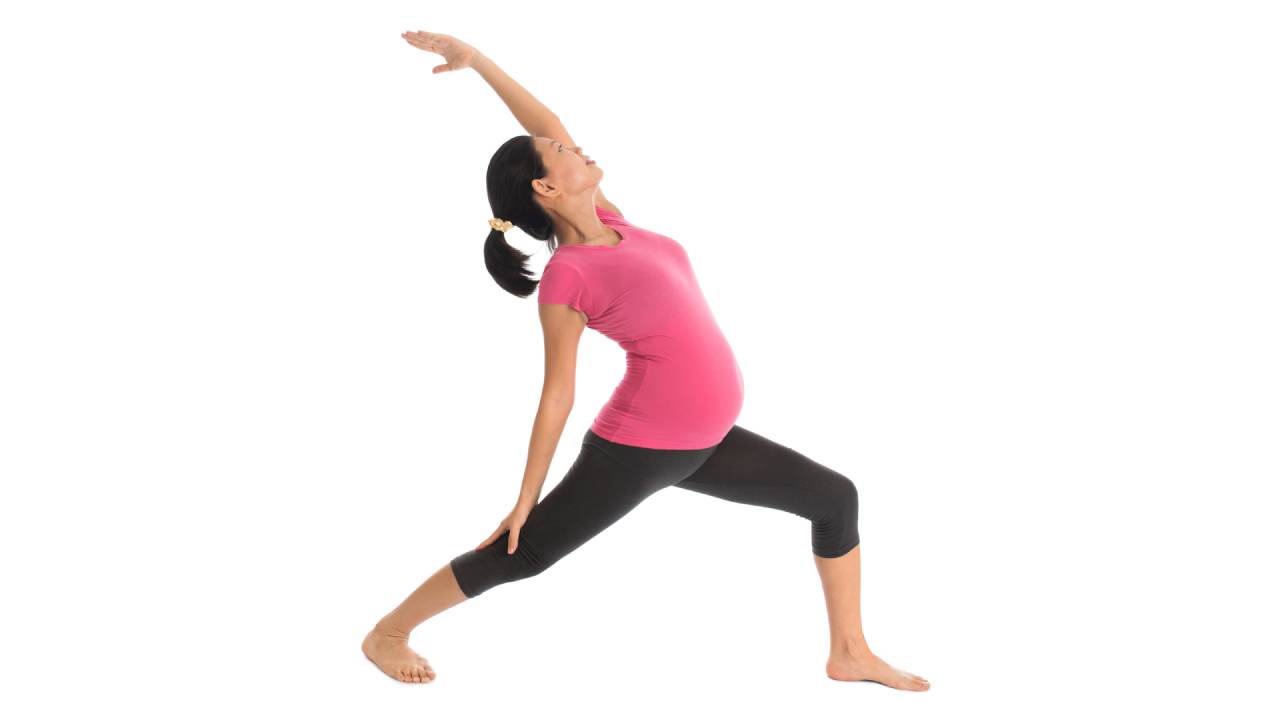
- Start in Warrior position. Bring your hand down to rest on your back leg. Bring your front arm up towards the ceiling.
- Bring your gaze up to your front fingertips.
- Keep the front knee bent, pressing your feet into the ground. Sink the hips toward the floor and relax the shoulders.
Triangle Pose (Trikonasana)
A sumptuous pose to help stabilize both physical and mental balance. Especially helpful as your baby grows and your center of gravity starts to shift.
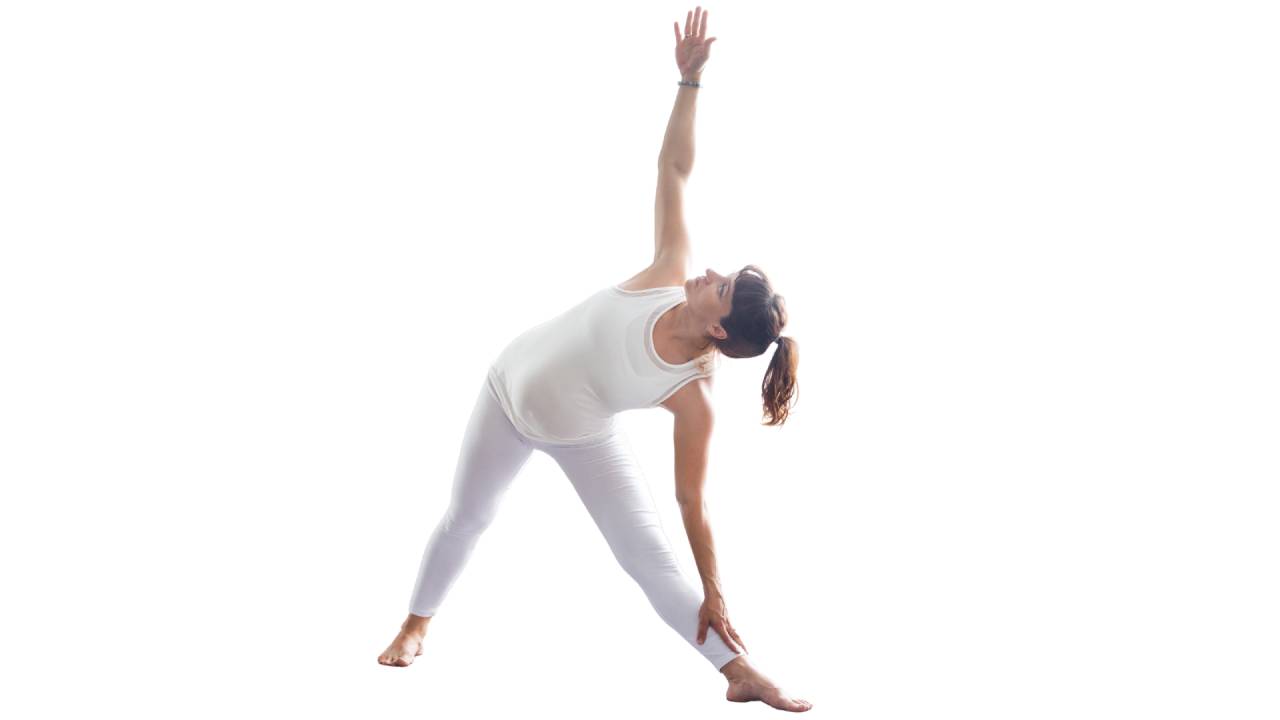
- Stand with your feet apart, a little wider than hip-distance.
- Raise your arms on either side, keeping them parallel to the ground.
- Bend sideways to one side, reaching and touching your foot with your hand, raising the other arm upwards.
- Repeat with the other slide
Practicing these poses in your second trimester will help support your muscles to relax more, support blood and oxygen circulation and aid digestion. Just take it slow and enjoy the relaxation.
Prenatal Yoga – Your 3rd trimester (Weeks 28 – 41)
As you approach your final months of pregnancy, you may be finding activities more difficult and moving, in general, a bit restrictive.
Your energy may have also dipped, so let’s explore some gentle movements that will help soothe any aches and pains, but also help you mentally and physically prepare for your baby’s birth. Breathe work and hip openers will be particularly helpful at this stage.
Garland Pose (Malasana)
Garland pose is also known as a ‘yogi squat’ and helps to release tension in the lower back, hips, ankles, and pelvic floor.
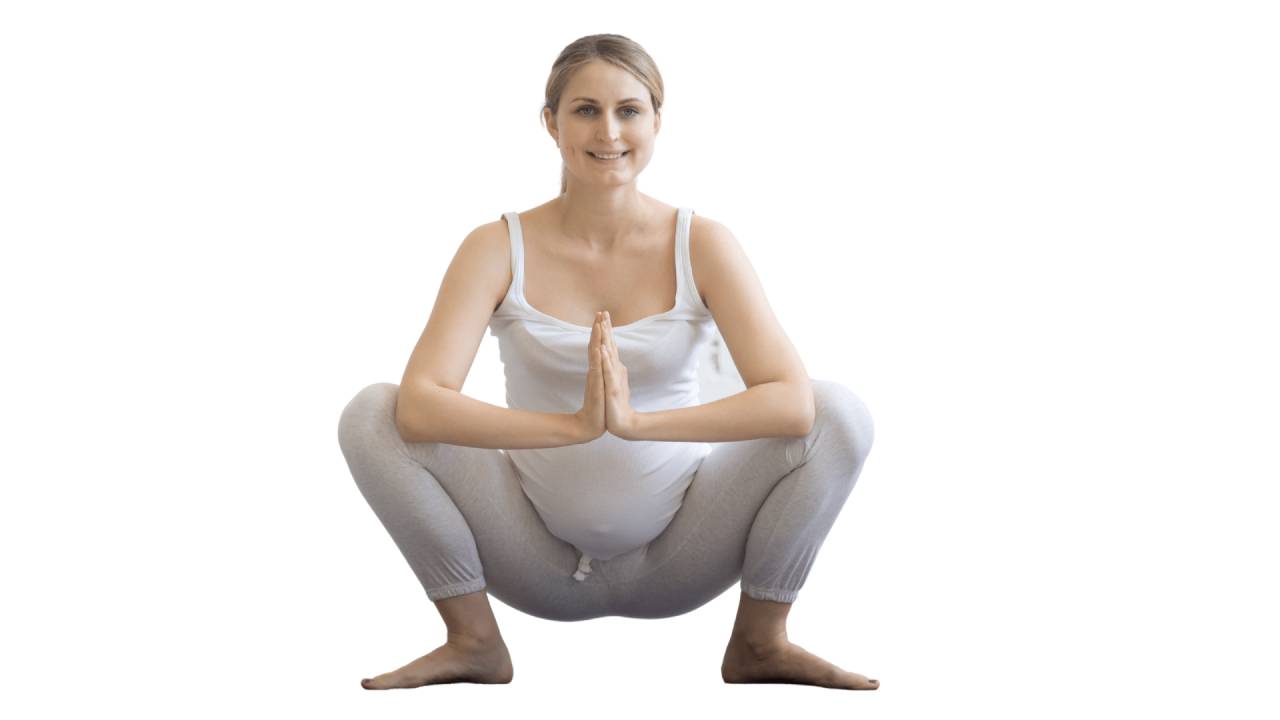
- Being in a squat position with your feet as close together as possible, with your heels on the ground.
- Lean your torso forward slightly and fit it between your thighs.
- Press your elbows against your inner knees, bringing your palms together
Goddess Pose (Utkata Konasana)
Another satisfying pose to help strengthen and lengthen the leg muscles as well as relaxing those all-important pelvic muscles.
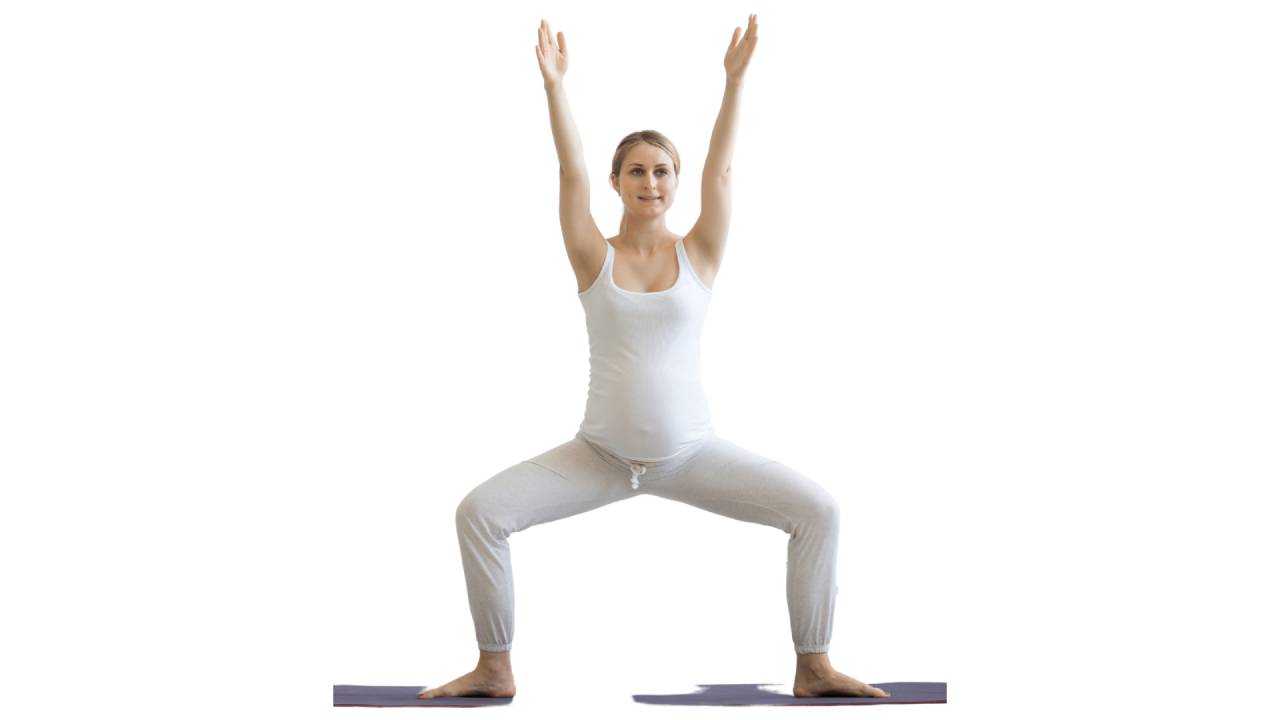
- Stand by placing your feet a little wider than hip-width apart.
- Turn your toes out so your feet are pointing at a 45-degree angle.
- Bend your knees out towards your toes and lower your hips down.
- Reach your arms out either side and bend your elbows so that your fingertips point towards the sky.
- Engage your core muscles and lengthen your spine.
Your body is doing something incredible…now is the best time to honoring it.
Give your body and mind what they deserve and practice a little yoga every day for a healthy pregnancy.
What about Postnatal Yoga?
The physical and emotional experience of giving birth requires a period of recovery. Although you may not get a great deal of rest, now you have a newborn to look after – your rehabilitation is very important, and yoga can provide significant benefits to support it.
Think of postnatal yoga as addressing the physical, mental, and emotional challenges of being a new mother, as well as the aftermath of pregnancy and giving birth.
Keep an eye out for our upcoming post all about postnatal yoga sequences and how you can embrace a whole new style of yoga to support your recovery and motherhood wellness.
Practice Yoga Safely with Expert Guides
VIVAYA offers live-streamed classes, personalized, one-on-one sessions for all abilities, including specialized workshops that can support your health, wellbeing and nutrition throughout your pregnancy. Whether you’re starting your wellness journey or looking to take your practice to the next level, VIVAYA has an online sanctuary of classes and community waiting for you. Check out our schedule of live, online Yoga classes here
With dedicated teachers specializing in prenatal and postnatal yoga, you will receive carefully guided classes, allowing you to go at your own pace. All VIVAYA yoga & meditation instructors are experts in their depth of knowledge, compassion and patience, and intuitive dedication to working with you on your individual journey.
Try 14 days of FREE, unlimited yoga & wellness classes, and experience a new, welcoming online community.
